To edit a student’s enrolment, navigate to Enrolments -> Manage Enrolments -> select the Enrol ID of the desired student
You will be taken to a similar screen below. This is where you can edit enrolment information
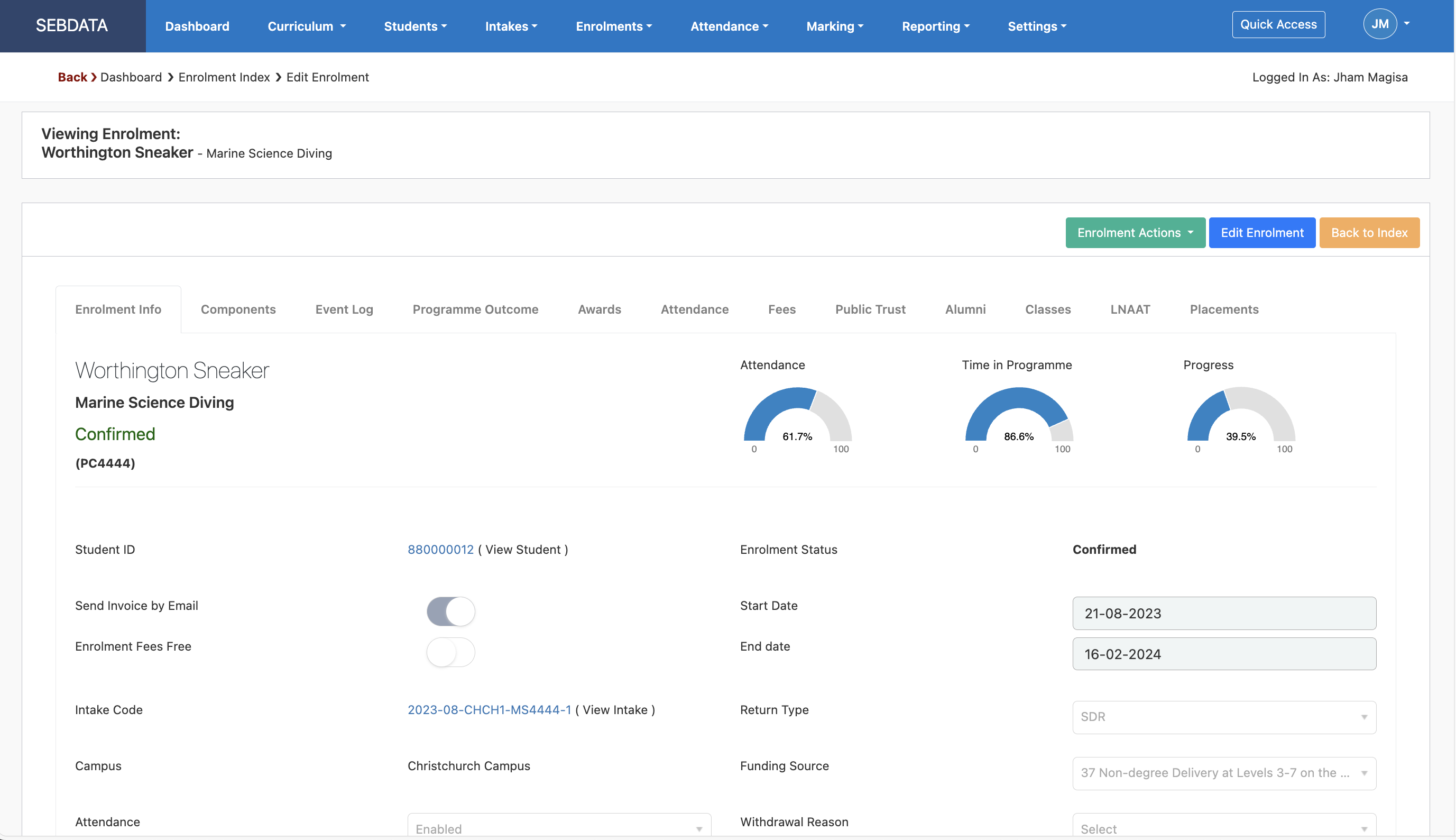
In the enrolment screen, you can change Start and End dates, select the return type (e.g. if you no longer want to report it through and SDR) or enable/disable attendance tracking. You may also be able to delete the enrolment if it was only just created.
This page will explain how the different tabs in the Edit Enrolment page works

Yours may look different depending on the width of your screen.
Please note you can only edit an enrolment once you click the “Edit Enrolment” button. Once you are done editing don’t forget to click the “Update Enrolment”.
Enrolment Status
By default, an enrolment’s status will be provisional. To change this, please use the Status Wizard. You will have to change the status to “confirmed” in order to report the enrolment through SDR. The only way to change the Enrolment Status in SELMA is to use either the Withdrawal Wizard or Status Wizard native functions in SELMA.
Enrolment Info
The enrolment info tab looks like this
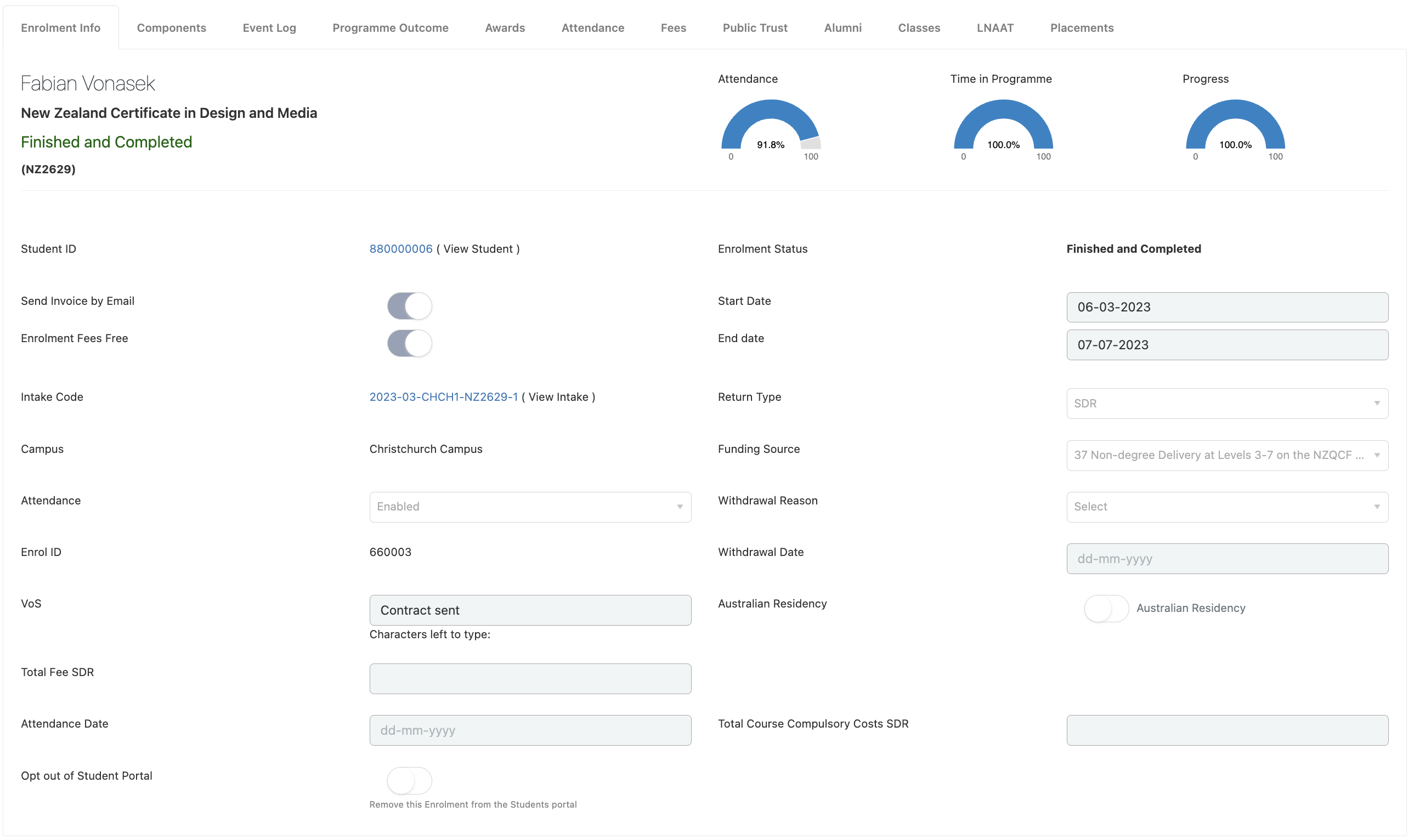
You can change the information in here but make sure that all the information that is being changed are correct as it will affect your report later on. Some key components in this tab are:
Enrolment Measures

On the top left, the user will now see a summary of the enrolment with: the student’s name, programme name, and status on display.
On the top right, the user will see a summary in graph format of the following for the enrolment: attendance, time in programme, and progress percentages.
Changing the Start/End Date of an Intake or Enrolment
When a user goes to change the start and/or end date of an enrolment or of an intake, they will be presented with a pop-up message like the following one that alerts them. This pop-up message flags to the user that the change of the start/end date will also apply to the related intake or component enrolments at the same time as well. Please see the following screenshot as an example:
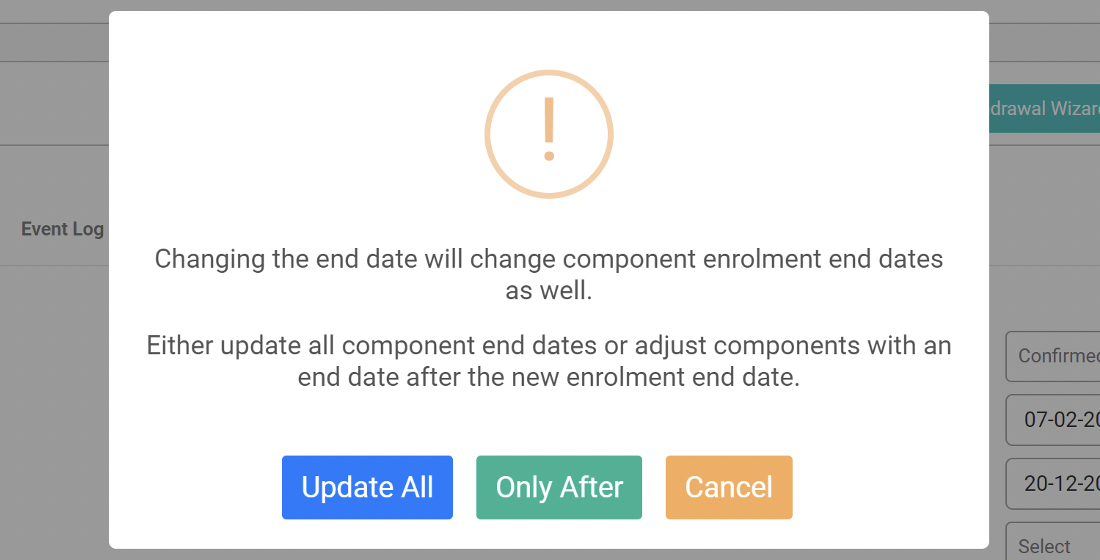
The user can choose one of the following options to proceed with. The logic behind these options will apply in a similar fashion to changes to enrolment and intake start and end dates:
- Update All: selecting this button will update all components of the enrolment or intake to match the new elected start/end date.
- Only After: selecting this button will update only those components of the enrolment or intake with a date that falls outside the new elected date boundary.
For example: in the above example, the user is attempting to change the enrolment end date. In this case, the message alerts the user that they have the option to adjust only those components with an end date that is after the new enrolment end date.
Another example would be if the user is attempting to change the enrolment start date. In this case, the message would alert the user that they have the option to adjust only those components with a start date that is before the new enrolment start date.
- Cancel: cancels the change that the user started to make, and returns user back to the “edit” screen
When changing dates in Enrolments and Intakes, SELMA runs a validation check to make sure that the relevant end date is after the relevant start date. Otherwise, SELMA will throw an error, like the following:

Opt out of Student Portal
By clicking this button, the student will not be able to see any relevant information in the portal about this enrolment.
Components
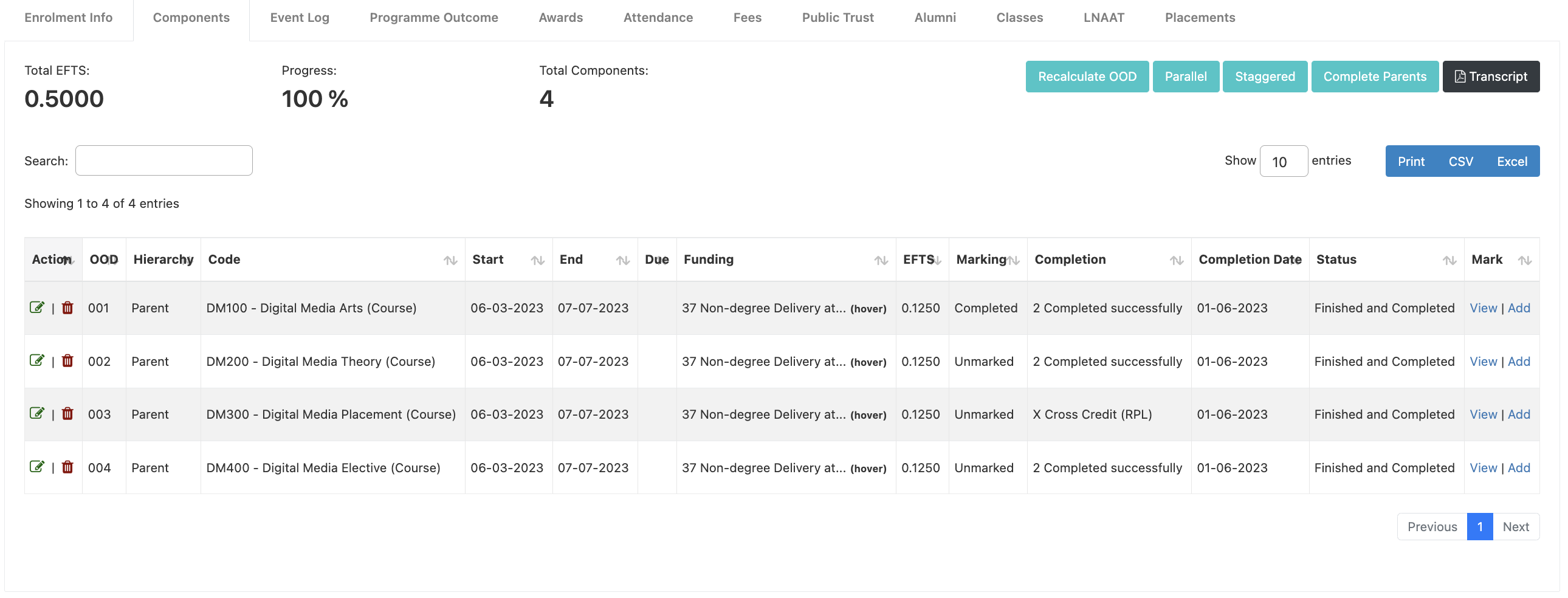
To edit a component, click the pencil button. To delete it click the red bin icon.
When clicking on the pencil button, you can edit all information of a component. This is information for this individual student’s enrolment only. It will not change any curriculum information or the information in the intake.
Users who are granted Admin/Registrar role will see this screen on their end.
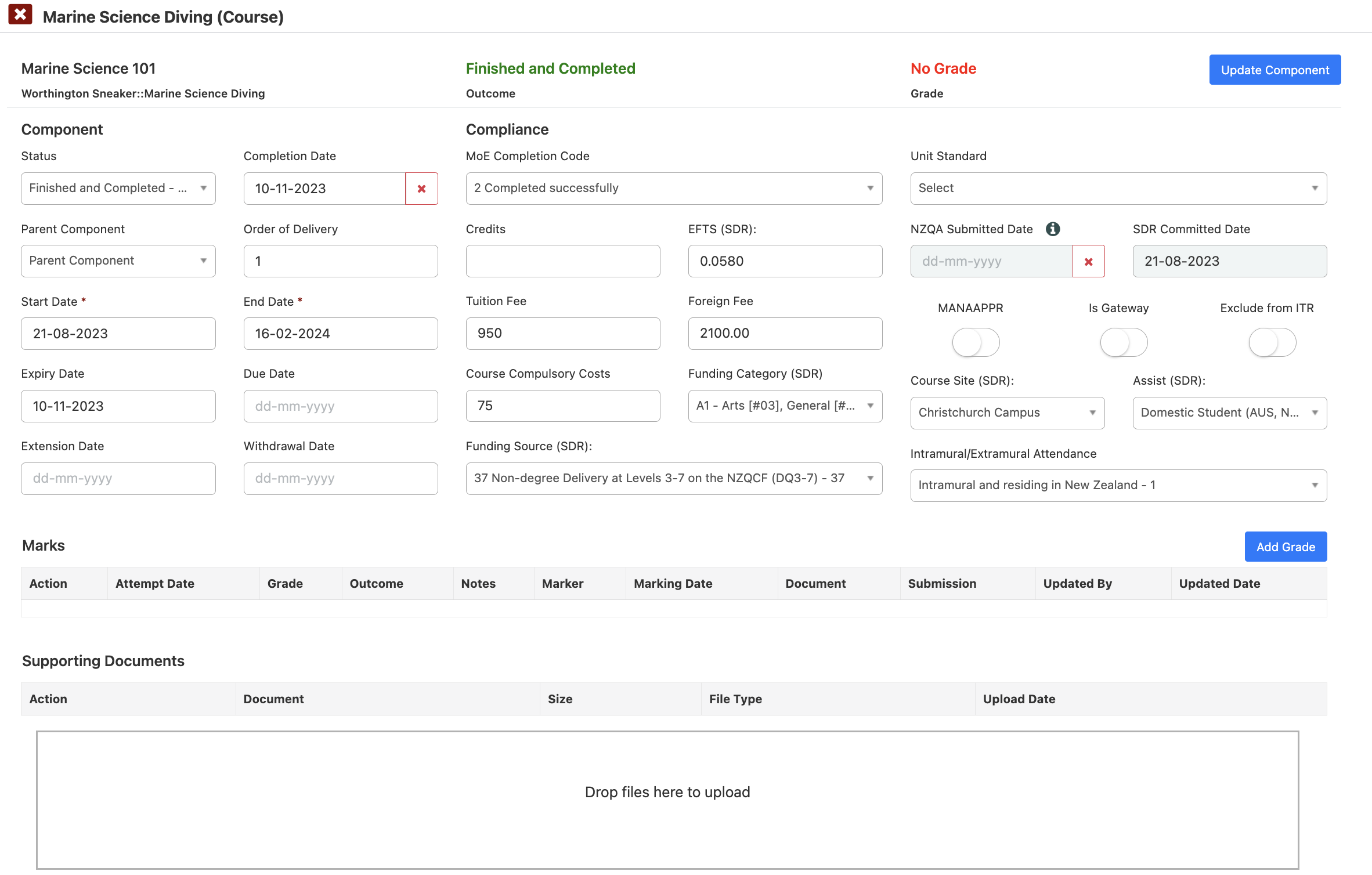
If you are only granted a ‘Teacher’ role then your view will look like the screen below

The action pencil and delete button will be disabled for clicking. Teachers can only add marks and view marks (Teachers cannot edit a component). Teachers can add a mark to a component (e.g. if it was assessed by a teacher) by clicking on “add”. You can view all marks by clicking on “View”. There are unlimited attempts for a component that can be marked liked this. Successful marks can then be further processed by an Administrator or Registrar for official reporting – see Confirm Marking (grid).
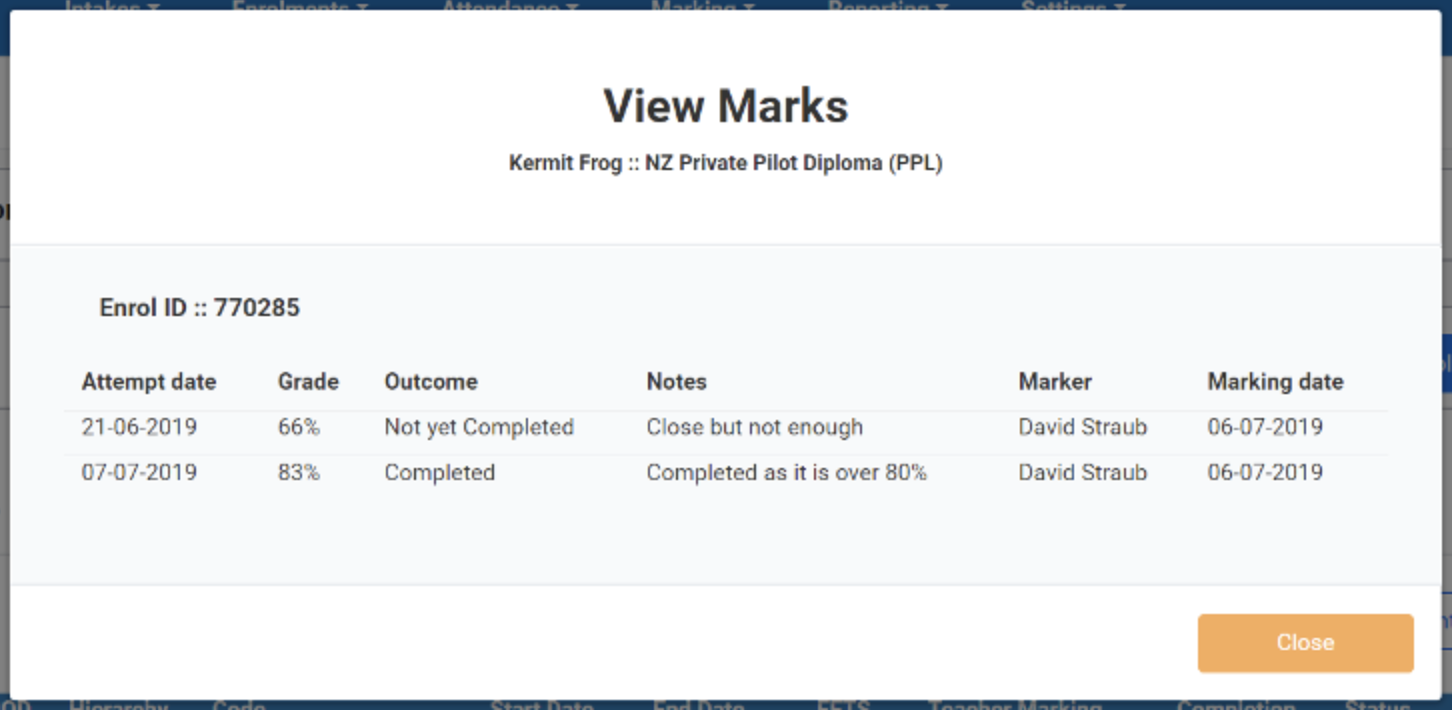
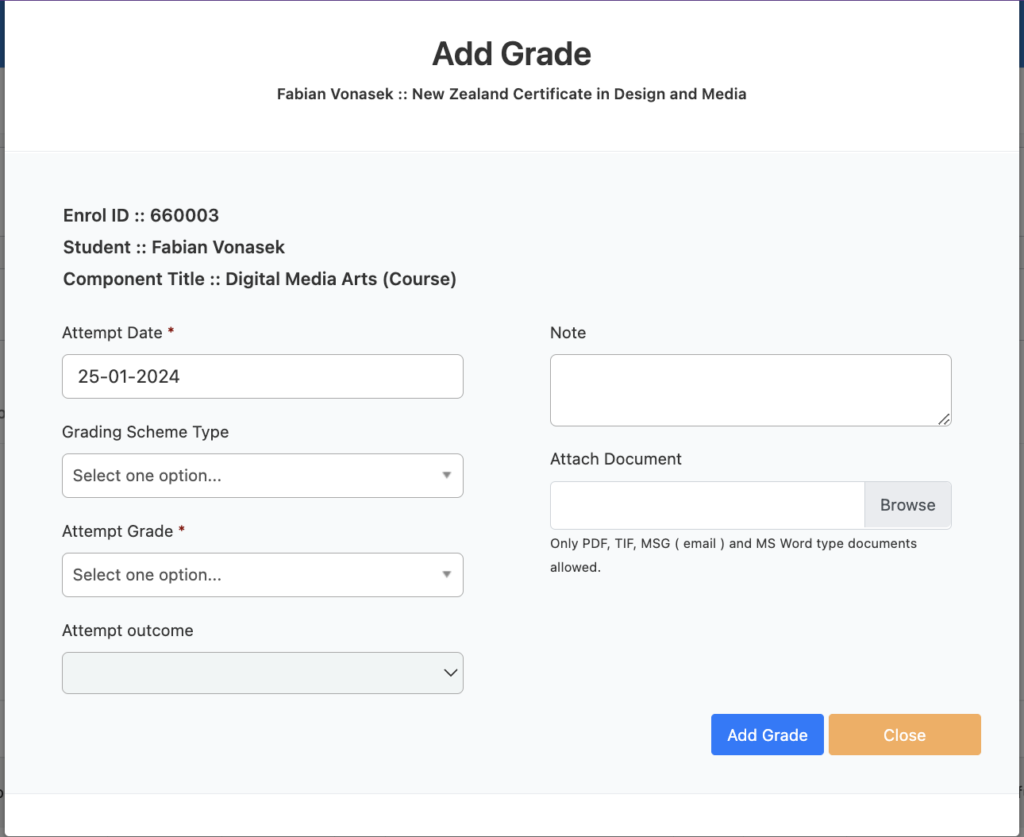
Component Due Date
Users are able to add a due date to components within a student’s enrolment. This will help alert users of a component’s deadline for a certain enrolment and can therefore help administrators organise if the student is not on track to meet this due date.
To add a component due date, please click the “Edit Enrolment” button within an enrolment. Then, navigate to the relevant component row item, and click the pen and paper icon on the same line, which should now be green colour. This will bring up the following slide-in page for the user:
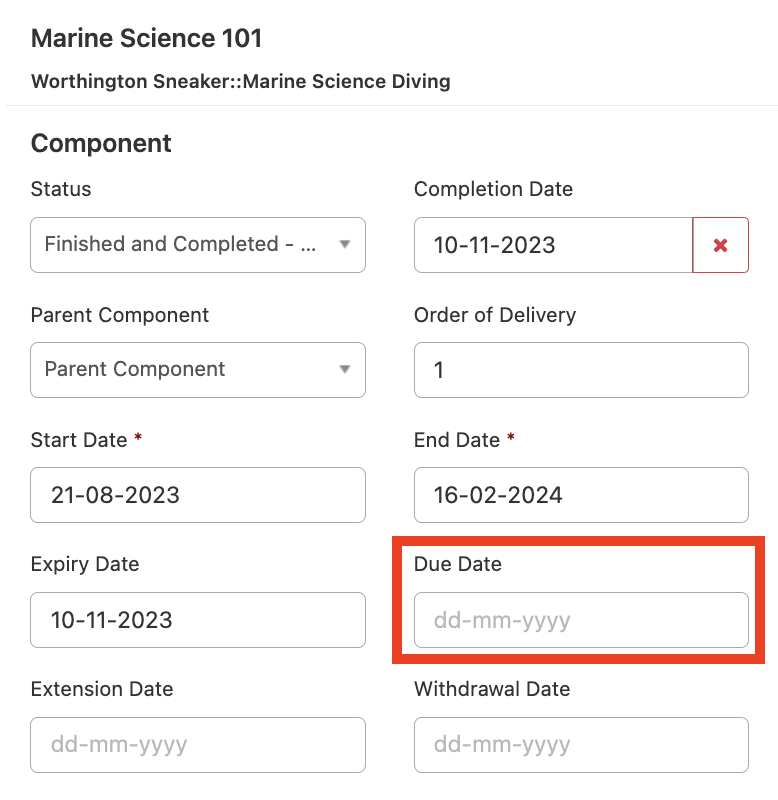
Don’t forget to “Update Enrolment” to save changes. This will update the component with the inputted due date. If this field has not been manually updated by SELMA users, it will automatically be populated based on the order of delivery of the component and the component’s length.
Enrolment Component Credit Calculator
When the “credit” field has been changed/updated, SELMA will alert the user that the component credits have changed and asks the user whether they would like to change the components’ EFTS figure accordingly in line with this credits field change as well.
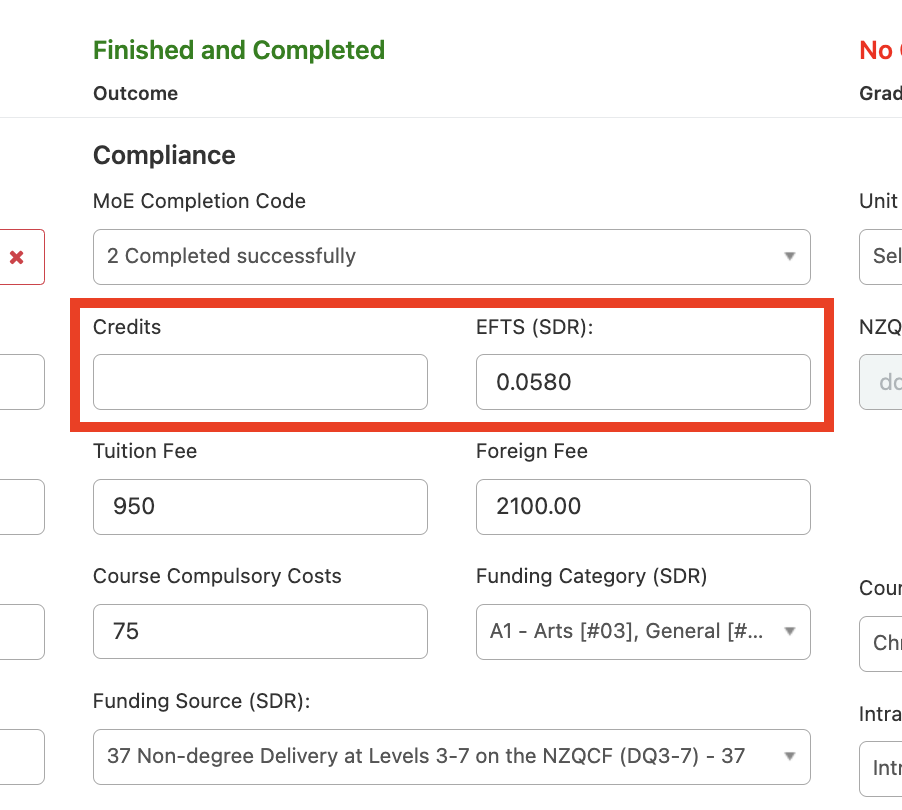
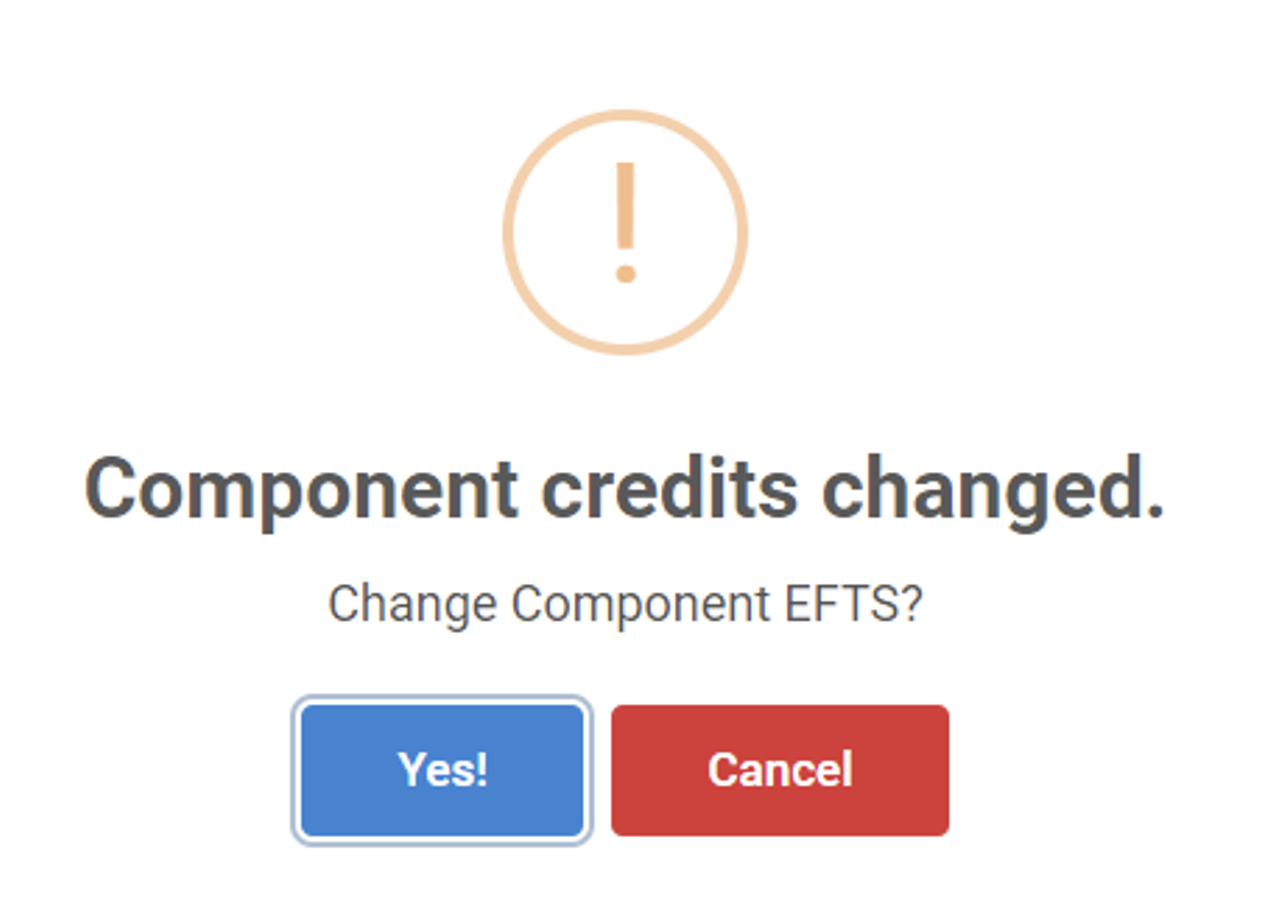
If the user agrees, then both the Credits and EFTS (SDR) fields will be updated simultaneously, the EFTS field changing in proportion to the number of credits entered into the Credits field.
Users will appreciate this change as credits are linked to EFTS value under NZQA, so a change in one will inevitably have bearing on the other. This lets users alter the credits field and prevents them from forgetting to update the EFTS value accordingly. Failure to do so could result in incorrect EFTS figures being reported through to NZQA.
Please note that for all the changes to reflect the system the “Update Component” must be pressed after editing.
Event Log
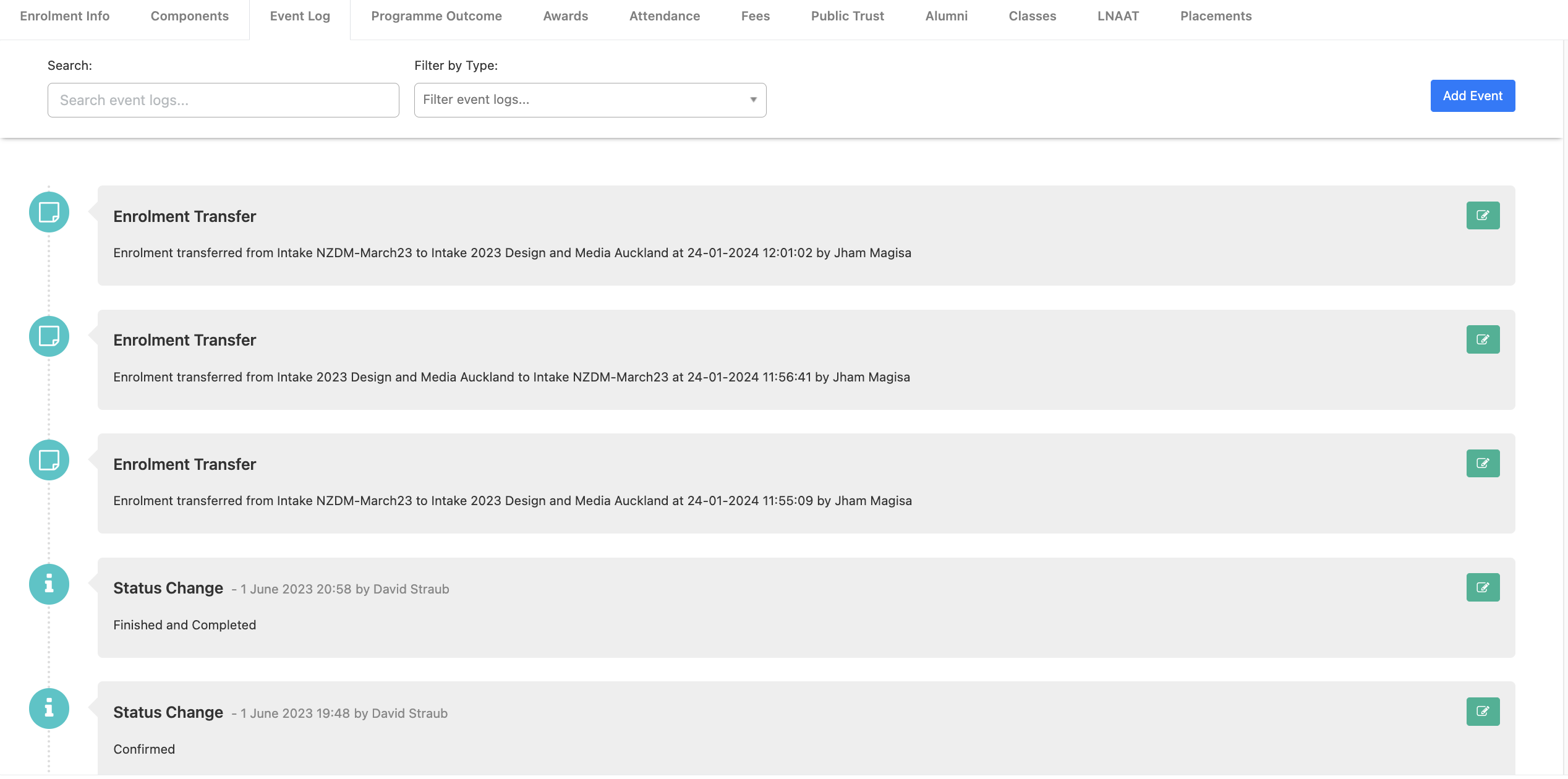
This shows the history of what’s been added, changed, or deleted in that specific enrolment. This is particularly important when trying to figure out why information has been altered.
You can also add an event to log in the Event log by simply clicking the ‘Add Event’ button.
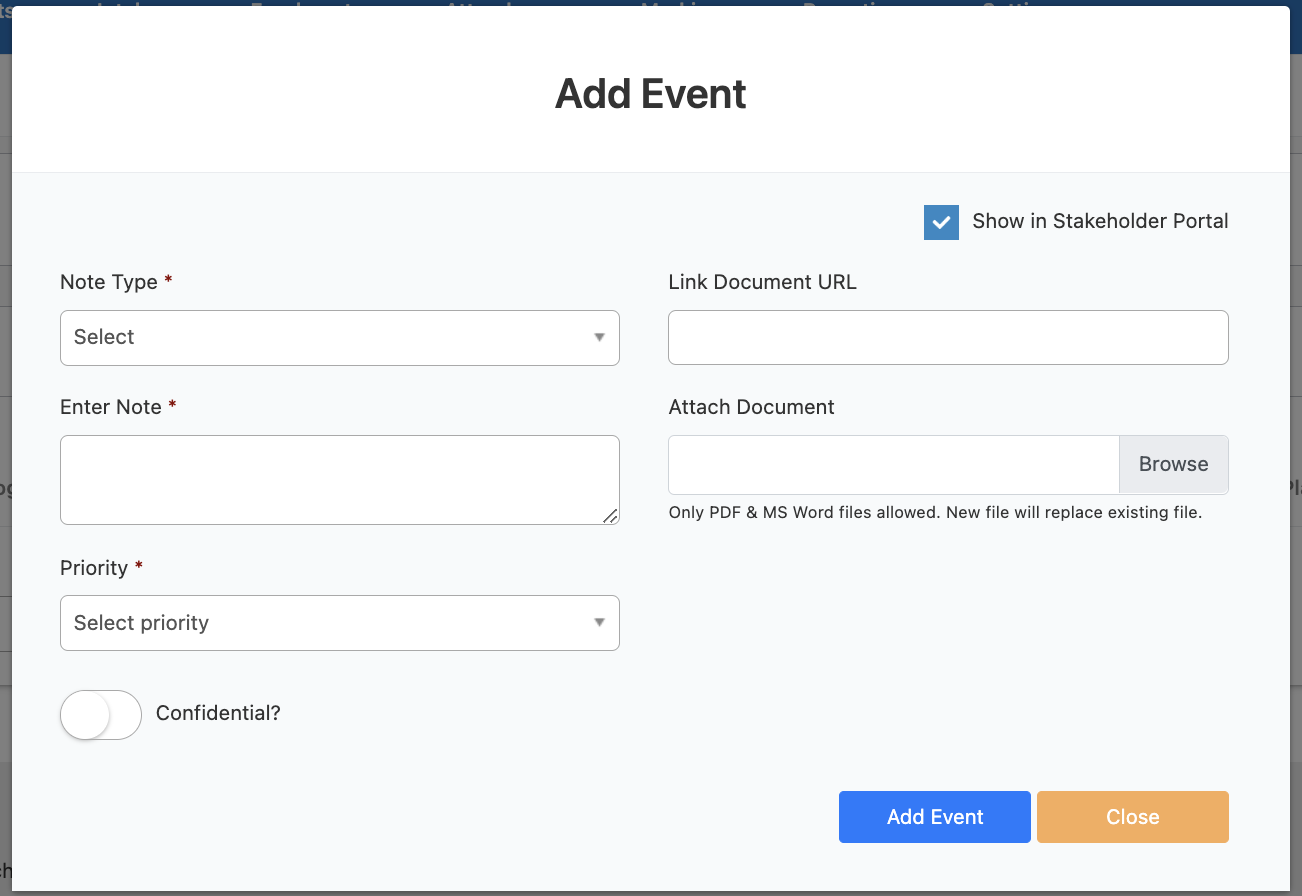
Simply fill in the required field mark with * to create an event.
You can also edit an event by simply clicking on the green button next to the desired event –

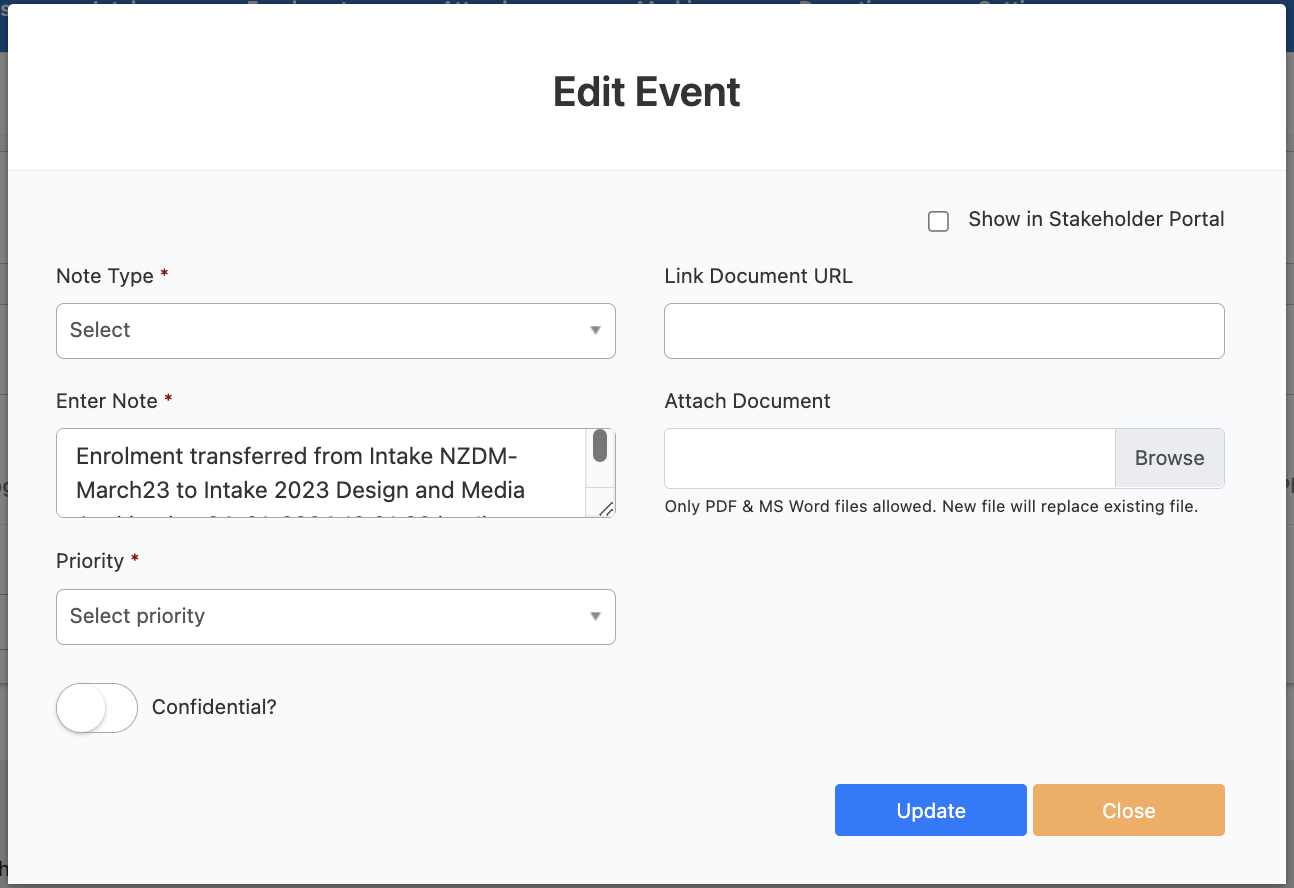
Update the edited event to save the changes or close it to not change anything.
Programme Outcome
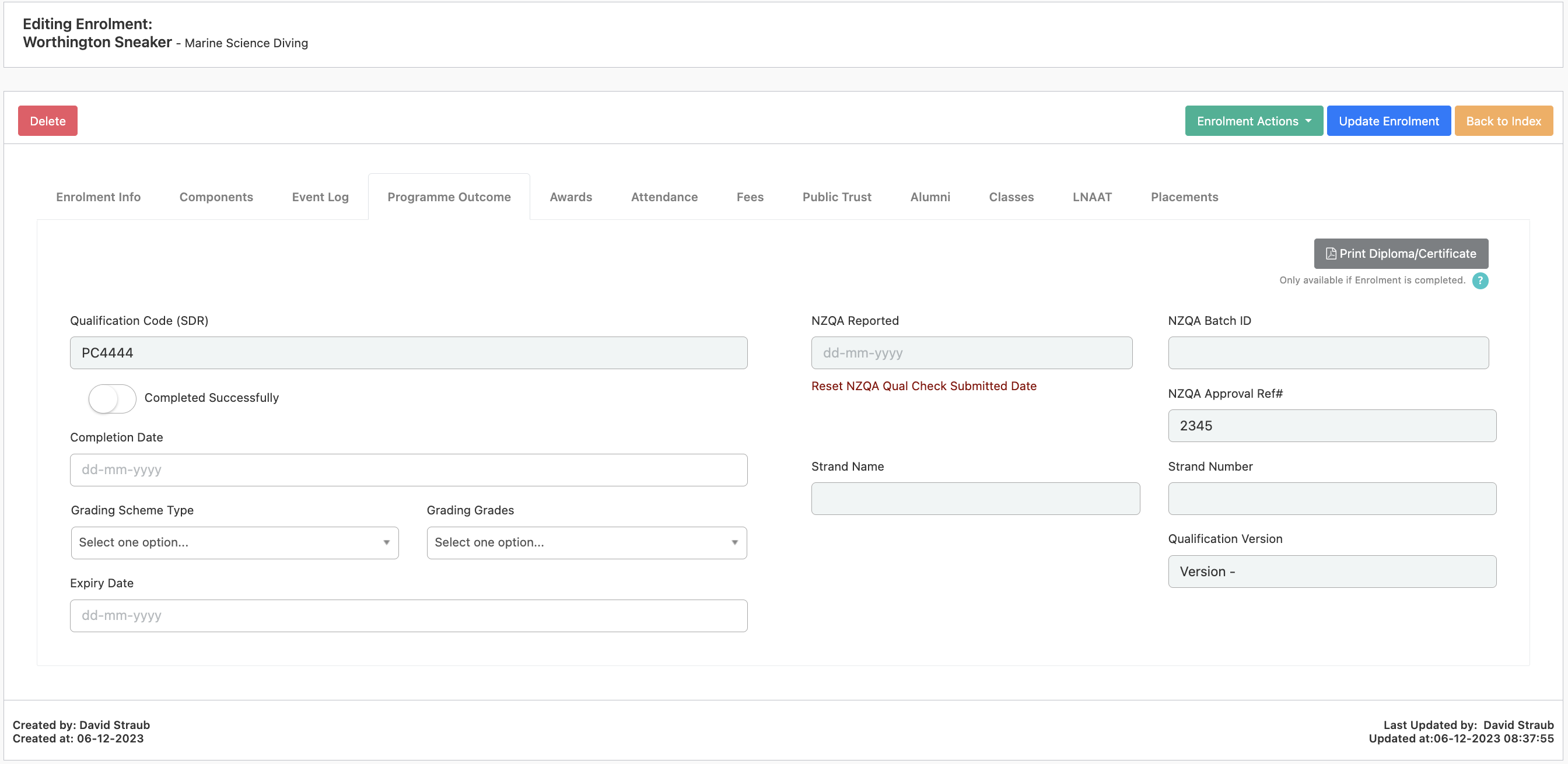
In this section you can view and edit a student’s programme outcome as a grade. Complete this section as fully as you can, as these have implications for SDR reporting.

Print Diploma/Certificate

Users are able to print a student’s diploma/certificate in this section. Printing will only be allowed once a course/programme has been marked as “finished and completed”. As of the moment the Print Diploma/Certificate button is disabled as the component is not yet completed.
Awards

If you set up awards you will be able to award students relevant awards in this tab.
Fees
When enrolling a student, all relevant fees from the curriculum setup and the intake are compiled and fee lines created. You can now choose to add additional fees like uniform or fees for additional units etc. You can now also post the fee lines to XERO if you have a XERO integration. If you want to print an invoice out of the system, talk to us about an invoice template. We will set it up for you. In general, Fees tab looks something like this
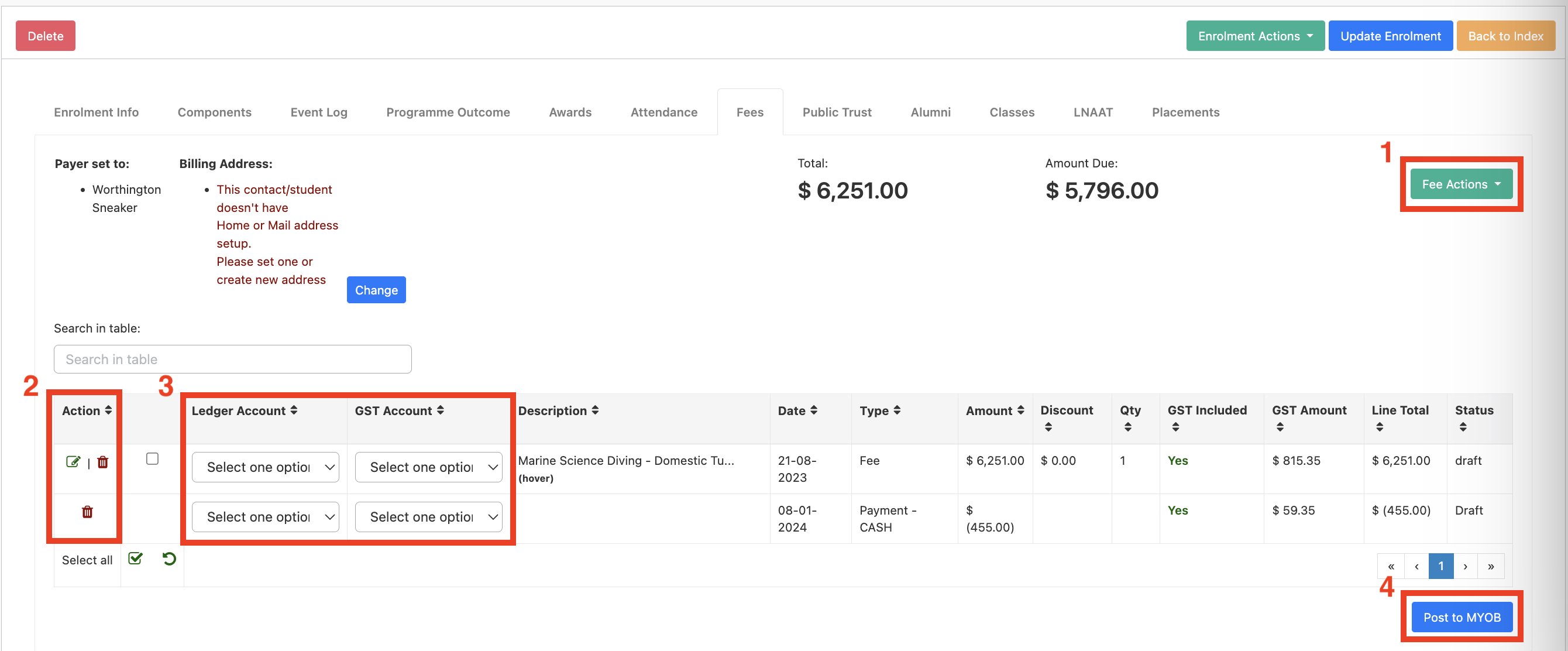
1 – Fee Actions
You will be able to add fees and payments using this option. Depending on what integration you have you can also post the relevant fees line.
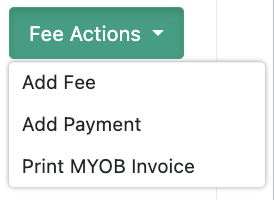
- Add Fee – you can create an invoice by clicking this button. Make sure to fill in all the fields that has (*) next to it.
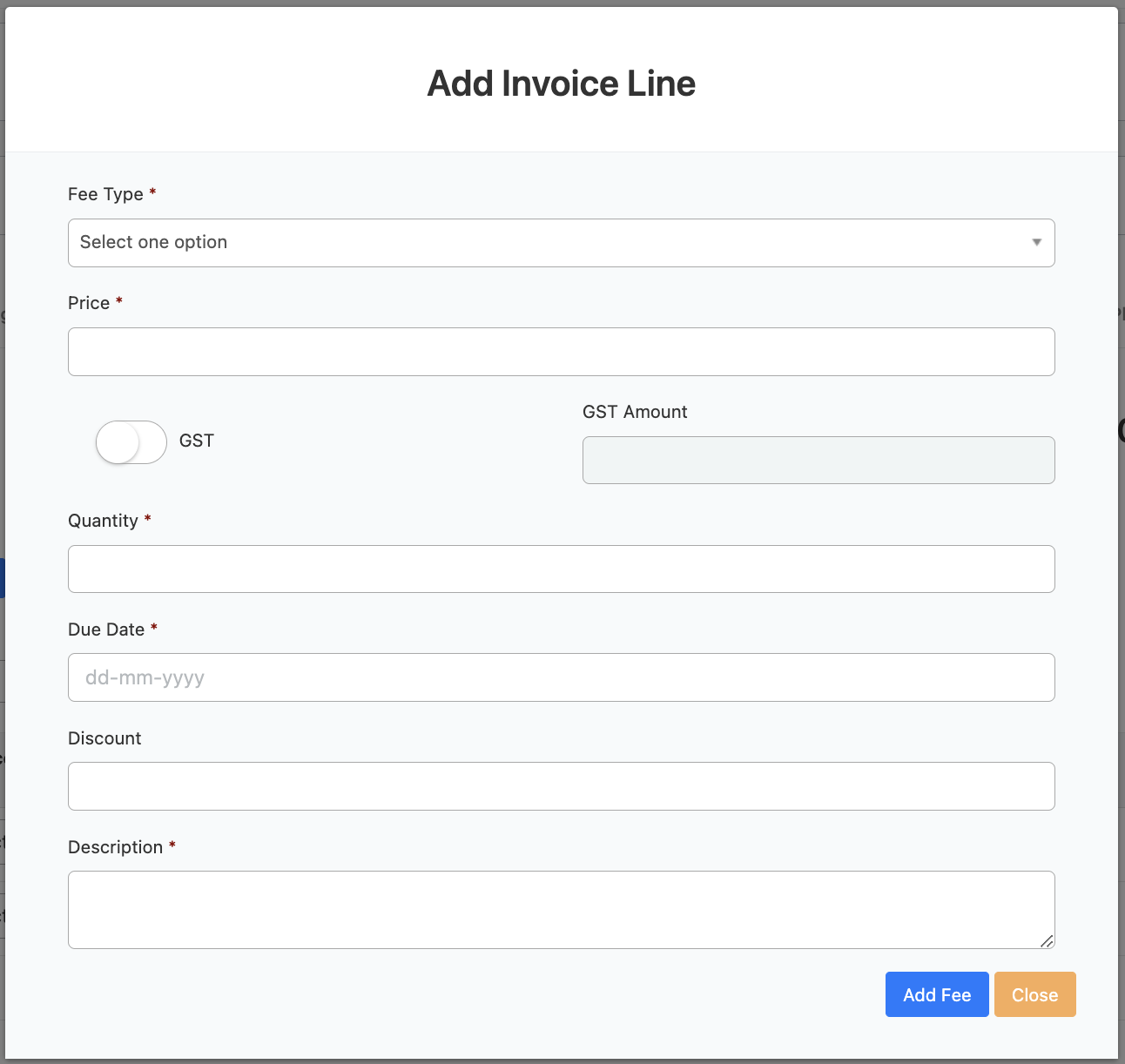
- Add Payment – you can add information about a payment that has been made through here. Make sure to fill in all the fields that has (*) next to it.
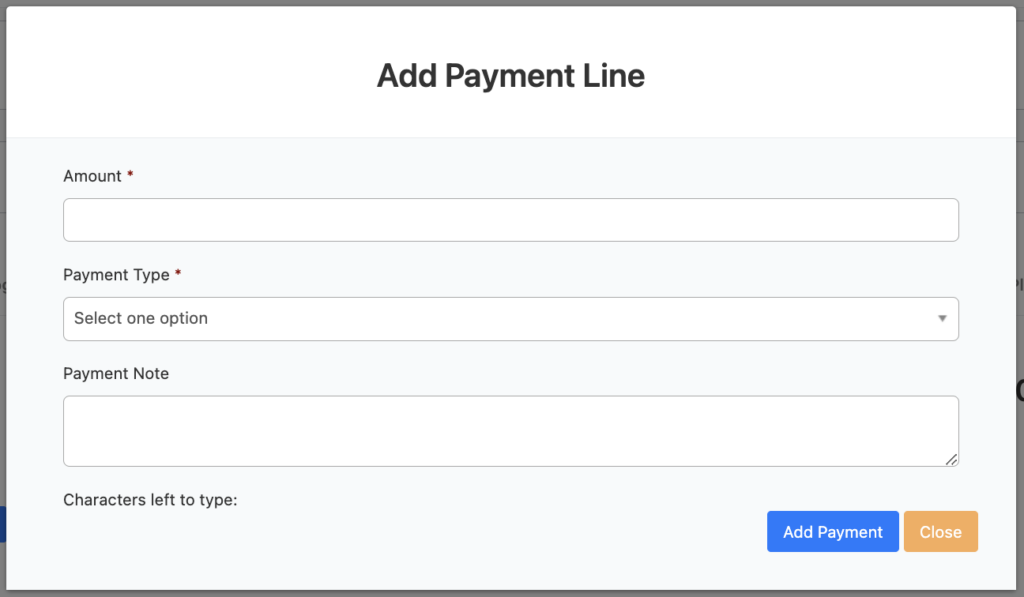
- Print Invoice – Depending on what integration you have; you will be able to print the fees line by using this button.
2 – Action button
Fee lines can be edited by clicking the green pencil edit button. You can also delete a fees line by clicking the red bin button. Please note that once a fees line is deleted it cannot be reverted.
3 – Account link
For each fees line you can link a ledger account and a GST account. simply select the account you want to link.
4 – Post to
As mentioned before, depending on the integration you have you can also post selected fee lines to the finance software integrated in your SELMA account.
Public Trust
The Public Trust area allows you to transfer information to Public Trust and automatically create a PT account for your learner.
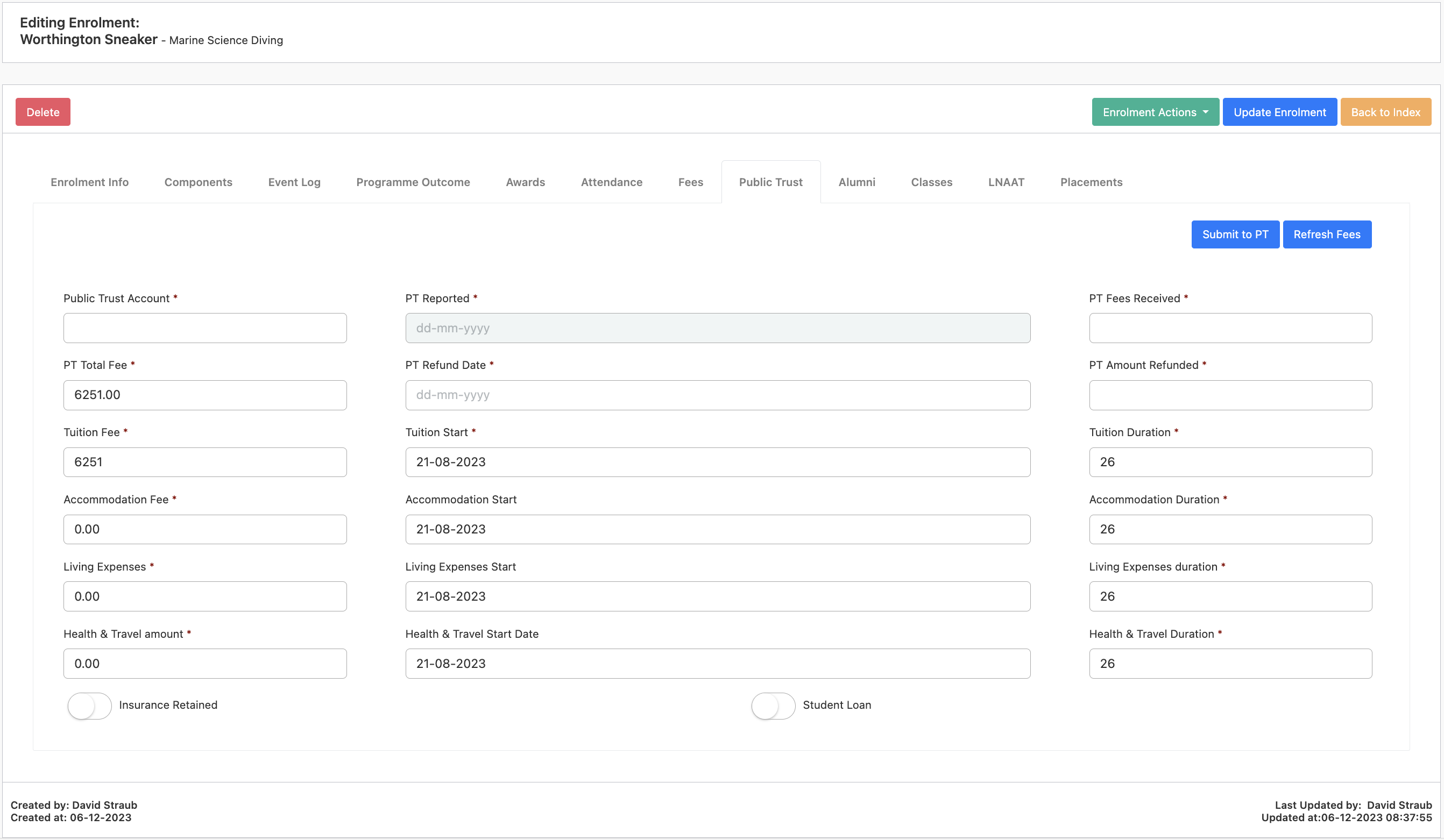
In general, all known fees will automatically populate on enrolment. You can however add more costs into this screen (e.g. Living Expenses). If you have added more fee lines in the Fees section, click ‘Refresh Fees’ to transfer them across. If you are happy with the information, click “Submit to PT”. For tracking purposes, we recommend writing the Trust Number back into the enrolment.
For more information about Public Trusts view the Public Trusts section.
Alumni
The enrolment outcome screen is all about the learner’s post study activities. This screen will help you track details on what your graduates are up to. Gathering this information is becoming more and more relevant for TEC and PTE’s.
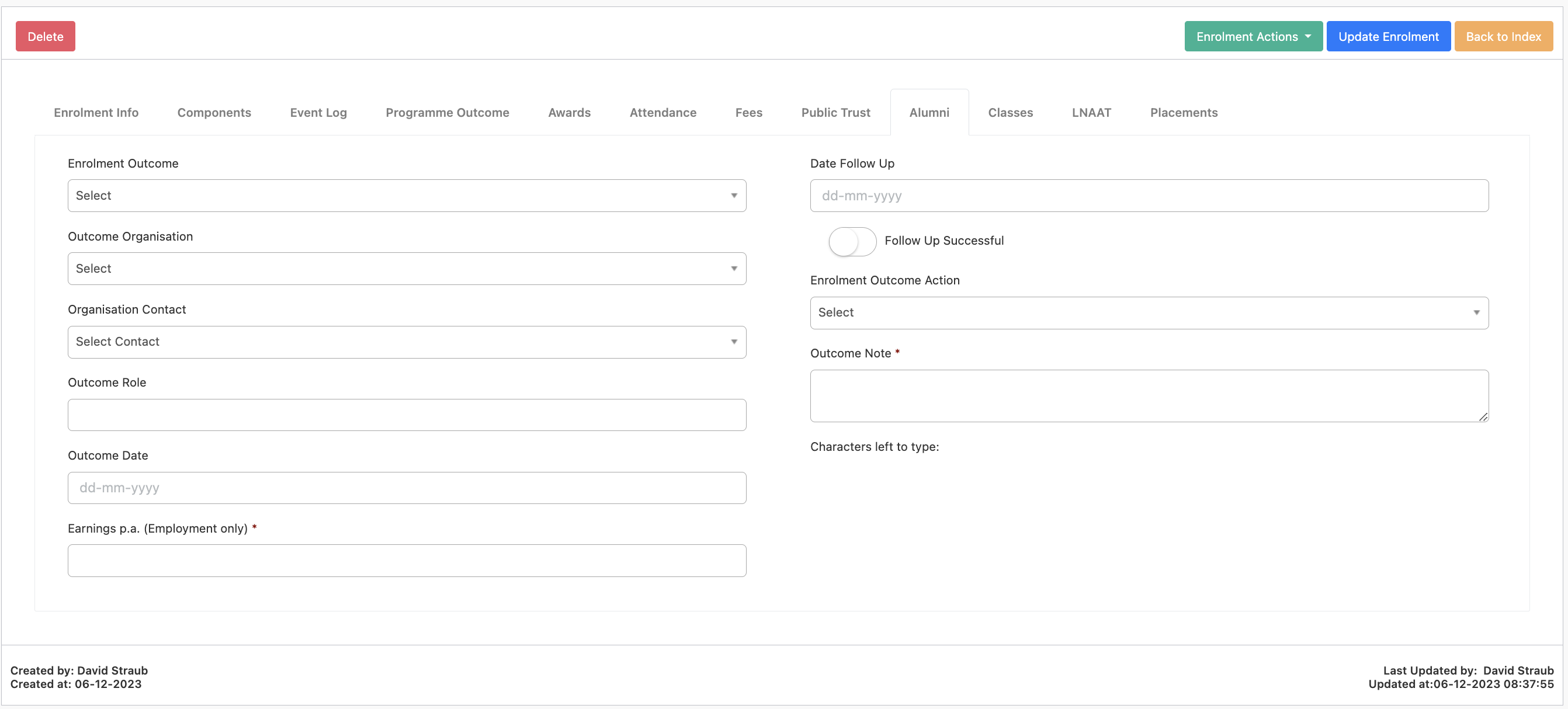
The organisation drop-down list will present you with education providers and employers which are setup in your “Other Organisation” section.
Tutor Editing Rights for Alumni Tab
Users with tutor level access can edit the “alumni” tab in student enrolments. This allows tutors to enter key details in relation to a student enrolment, particularly to do with their activities after completing studies with the provider, such as employment information.
Classes

Classes can be linked to the certain enrolment by clicking the “Link to Class” button.
LNAAT
This tab will show the percentage of LNAAT gained through the assessments. For more detailed information about this, check our LNAAT guide.
Placements

If a student starts his/her placement, the information can be added in this tab. Simply click the “Add Placement” button to add information about the placement.
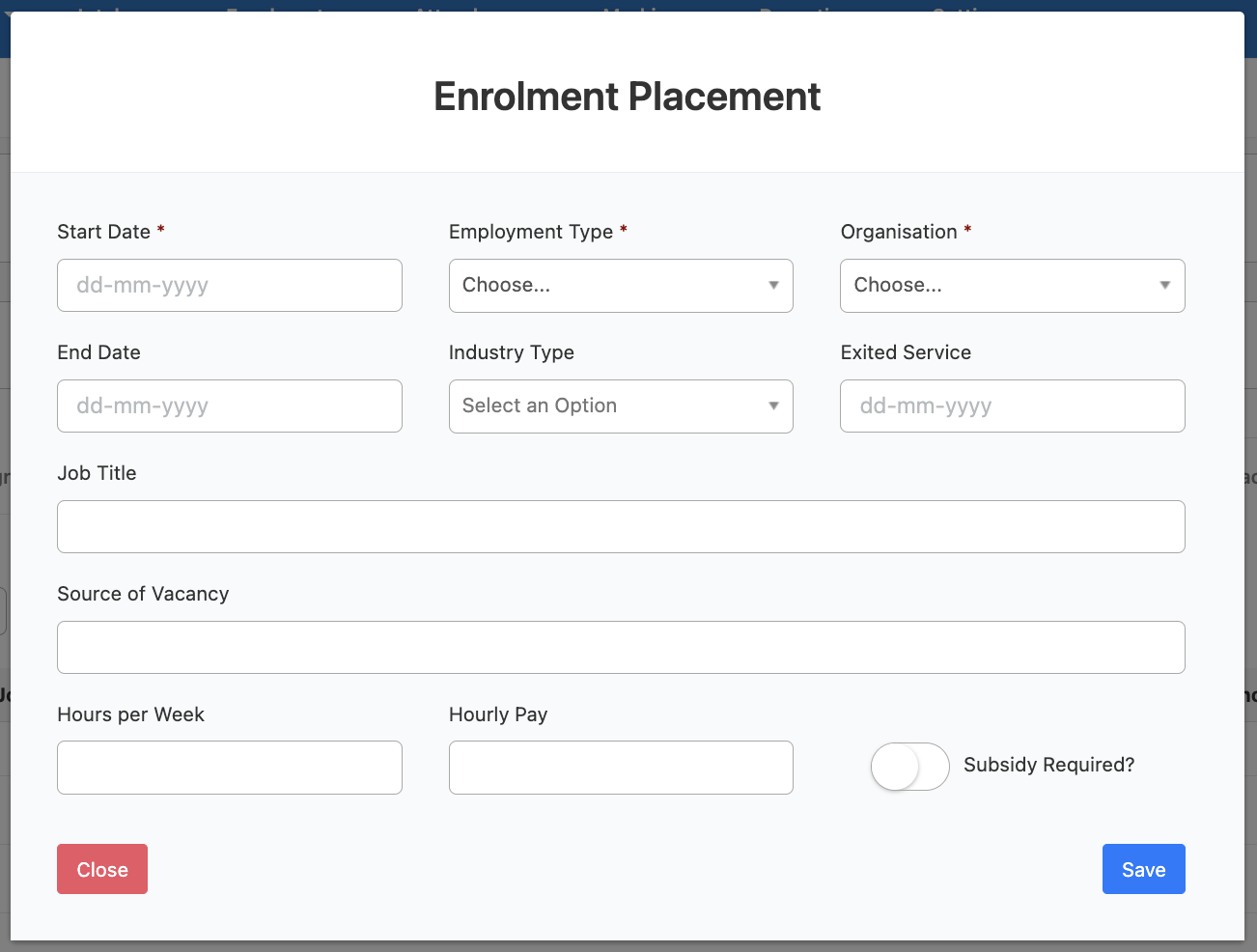
All fields with (*) must be filled in and the rest are optional. Save and the information will be shown in the placement grid.
